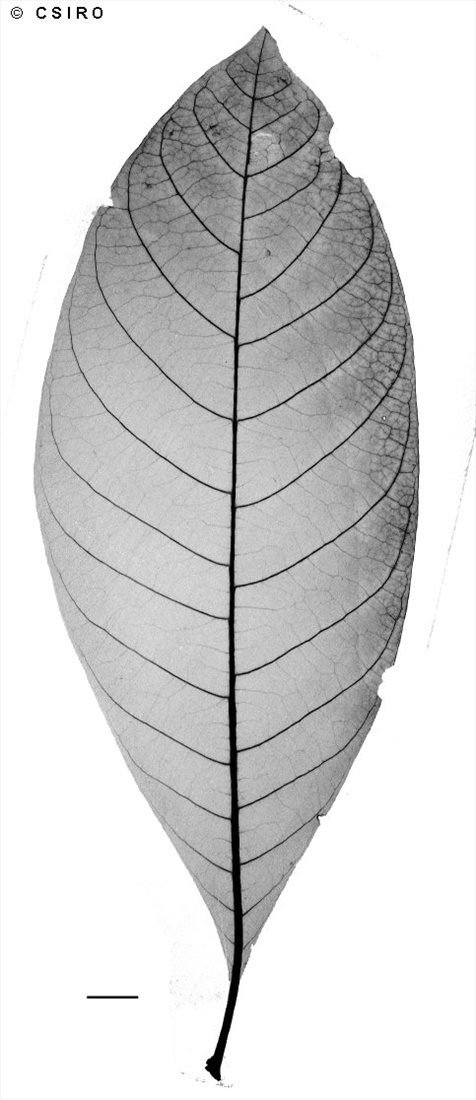Australian Tropical Rainforest Plants - Online edition
Voacanga grandifolia (Miq.) Rolfe
Rolfe, R.A. (1883) J. Bot. 21 : 202.
Usually grows into a small tree but also flowers and fruits as a shrub.
Twigs, petioles and leaves produce a copious milky exudate when cut or damaged. Leaf blades elliptic to obovate, about 10-33 x 5-13 cm, petioles about 0.5-2 cm long. One leaf of each pair of leaves is usually much smaller than the other. Lateral veins about 12-15 on each side of the midrib, curving but not forming definite loops inside the blade margin. Numerous peg-like glands or processes visible between the petioles and twigs. Short, erect, fleshy hairs usually visible on the underside of the leaf blades.
Flowers about 4-7 cm diam. Calyx tube about 18 mm long, lobes about 5 mm long. Corolla tube about 9-24 mm long, lobes about 10-40 mm long. Anthers sessile, about 3 x 1 mm, apex acuminate, base sagittate, attached to the inner surface of the corolla tube about 2-7 mm from the top. Carpels free or slightly connate at the base. Style glabrous, about 19 mm long. Stigma capitate.
Fruiting carpels transversely elliptic, up to about 12 x 15 x 10 cm. Aril orange. Seeds dark brown, about 8-13 x 4-7 x 3-6 mm, testa papillose. Embryo curved, about 6-7.5 mm long. Cotyledons suborbicular, about 2.7-4 mm diam., apex truncate, base cordate.
Features not available.
Occurs in CYP, known only from collections made on islands in Torres Strait and the Captain Billy Creek area of Cape York Peninsula. Altitudinal range quite small, from near sea level to 150 m. Grows in rain forest and monsoon forest. Also occurs in Malesia.
This is a rich source of alkaloids some of which may have significant pharmaceutical properties. Leeuwenberg (1985).







